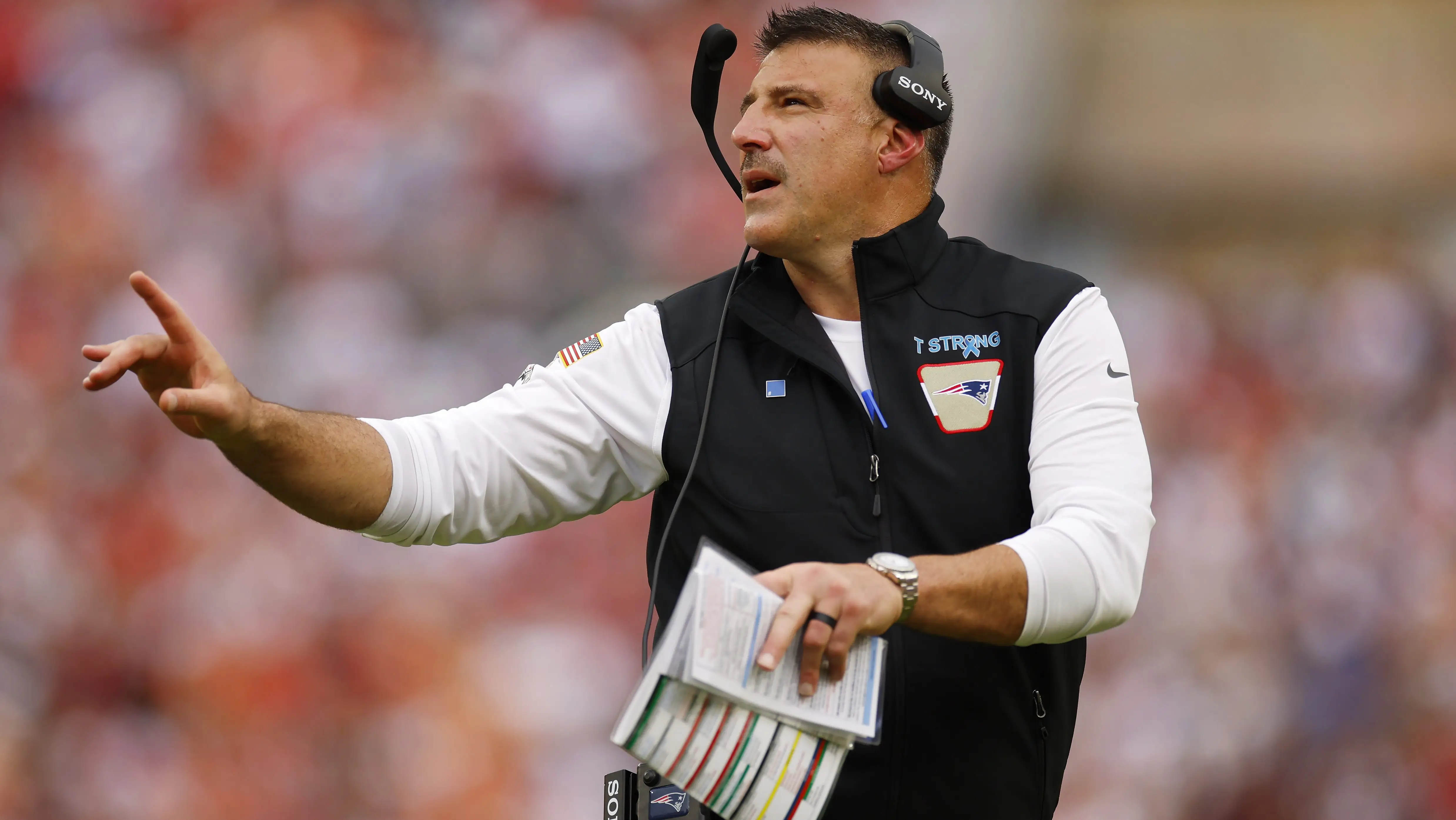Copyright gq

The National Football League has now played a staggering 54 international games, but Sunday’s overtime bout between the Indianapolis Colts and Atlanta Falcons was the first one in Berlin. The league has played two games in Frankfurt and two in Munich, but had never ventured into the German capital until last week. When the opportunity to attend the game first came up, I was thrilled to finally get to visit a city that so many people rave about. But like many football fans, I also wondered: Why does the NFL keep trying to make Europe happen? The breakdown of international games thus far is verging on imperial: five in Germany, four in Mexico, two in Brazil, one in Ireland, and a staggering 42 in London, 14 of which have subjected the Brits to mostly mediocre Jacksonville Jaguars ball. From the States, it’s easy to wrap your head around the motivations behind this experiment (grow the game, make money), but infinitely harder to understand who exactly is asking for this. Of course, there are fans of every sport in every country on the globe. But how many people can there really be in Berlin clamoring for a three-hour, wholly American sporting event in November, when the chilly weather is far more conducive to indoor activities? As it turns out, the answer is somewhere in the high five figures. During the game’s second half, the scoreboard at Olympiastadion—the stadium where Jesse Owens won four gold medals in front of Adolf Hitler—announced the attendance was 72,203 people. While it’s near impossible to determine exactly how many of those fans were traveling Americans, how many were expats living abroad, and how many were native Germans, the latter group had a way of revealing themselves. During the three days I spent wandering through Berlin as a guest of Marriott Bonvoy, I kept a running tally of which NFL teams’ apparel I spotted around the city. By the time we reached kickoff on Sunday afternoon, I had seen all 32 franchises represented. My instincts—and sometimes, if I felt like eavesdropping, their accents—told me that the people wearing non-Colts or Falcons stuff were likely native Germans. Why would a person wearing a Cardinals jersey, for example, pay for a long overseas flight to watch two teams they don’t even support? The Germans, meanwhile, had a bit of a yay, sports! attitude about the whole thing. I don’t mean that dismissively—more as an acknowledgement that, for the people of Berlin, the spectacle of the NFL being in town seemed to far outweigh the actual events on the field, or even who was playing. The more specific the jersey (i.e. Thomas Rawls, a cult hero 2010s running back for the Seahawks), the more I assumed that was a displaced American likely repping their home team. The more puzzling the attire (i.e. the bizarre combo of a Bengals jersey and Buccaneers hat I clocked on the street), the more I could tell they were just along for the ride. But that’s certainly not to say that the German population doesn’t care about American footy. Throughout the weekend, I saw hordes of people flock to pop-ups, designated fan zones, and other places you wouldn’t go unless you were ready for some football. On Saturday inside Alexa Centre, an enormous shopping mall near a major public transport hub, people happily lined up all afternoon for a Marriott Bonvoy football-themed activation. They’d admire a mural by the trendy German artist Moritz Adam Schmitt, have their photo snapped in front of a stadium backdrop, and then wait as it was printed on a Keysake, a collectible (but not functional) room key that entered them in a sweepstake for Super Bowl tickets. Certain bars became official fan outposts too, including Belushi’s, a true sports bar whose sprawling two-level occupancy was completely taken over by Falcons fans a day before the game. It was there that I realized that our version of football had truly spread across the European continent, by way of overhearing a man with a thick Liverpool accent rant to his friend that Bo Nix isn’t it, and that the Bills’ lackluster wide receiver corps will eventually doom them. After sidling up to their table, the group of Scouse gentlemen explained that they learned the game through RedZone and the games nationally broadcast in England on Sky Sports. Everywhere I looked in that bar—from the older European man toting a Supreme bag and an old school Pat the Patriot jacket, to the dude rocking the Rob Lowe NFL hat, to the former MLB outfielder from Georgia who presumably made the trip to cheer on Atlanta—I grasped the whole concept even stronger. Gathering to watch sports is one of the true universal pastimes, and the excitement I witnessed from the non-Americans wasn’t too dissimilar from my friends growing up in the Seattle area who were passionate about English soccer, or the droves of stateside F1 fans who wake up before sunrise to watch a race. As for the actual game experience, the Germans have a few things down pat, and a few more to improve upon. For starters, never in my entire life have I enjoyed easier ingress and egress at a sporting event. Despite warnings from the locals that traffic would be a nightmare getting in and out of the game, both were an absolute piece of cake compared to anything you’ll find in the US. Even with 70,000 people in the stadium, there was no standstill string of cars afterward, and we were back at our hotel some seven miles away within a half hour. (I have been to college football games where you don’t even leave the parking lot for a half hour.) Apart from the public address announcer speaking German, the game also didn’t feel particularly foreign. Sure, there were some things that grounded the event in Deutschland—Nena’s timeless banger “99 Luftballons” playing as a quasi jock jam; the lead singer of Hamburg techno group Scooter serving as a sort of warmup comic during timeouts—but overall it just felt like the Colts and Falcons were playing a neutral-site game. The things they haven’t mastered yet, though, are the logistics. Lines for pretzels, currywurst, and the all-important beer stretched longer than the Berlin Wall, and when we finally got our pretzels, they were cold. The nearly 100-year-old venue was ill-equipped to handle the sheer volume of people queuing for concessions, which made the concourse a treacherous zone to avoid at all costs. The German fans, meanwhile, didn’t quite understand when to get up for those concessions. Sitting for an entire stoppage of play, only to get up and shimmy their way through the aisle as soon as a drive started was particularly aggrieving, and created a perpetual dance of sitting and standing to let some guy fetch another pilsner. Those grievances, of course, were a minor blip in an otherwise lovely trip. Having lunch at Borchardt, the city’s famed schnitzel restaurant, a few tables over from both Falcons owner Arthur Blank and NFL commissioner Roger Goodell was a standout moment. So was attending an Alba Berlin basketball game and being delighted by the sight of coaches still wearing suits. Every stranger I spoke to, regardless of demographic, immediately brought up Zohran Mamdani whenever I mentioned living in New York. On a very congenial walking tour of the city, organized by Marriott, our guide also casually dropped a quote that won’t leave my brain anytime soon: “No matter how dark you think German history is, it’s worse.” Even so! My time in the city could not have been better, and the anthropological experience of seeing the biggest and brashest American sport played 3,900 miles from home was unforgettable. (Shout out Jonathan Taylor, whose 244 rushing yards also contributed to that.) Of course, like anything in life, you can never please everyone. While chilling in a stadium lounge before the game, munching on onion rings, I met an elderly German couple. The husband bore a passing resemblance to Werner Herzog, and the wife jumped at the opportunity to show me a news story about Donald Trump falling asleep in the Oval Office. Through limited English, she also said that she not only doesn’t care for the NFL, she didn’t even know it existed until it descended on her homeland. This helped answer my central question of who the Berlin game is ultimately for. While it wasn’t necessarily aimed at this woman, perhaps a riveting back-and-forth game featuring an 83-yard touchdown run from Taylor and the comic tragedy that shrouds the Atlanta Falcons wound up getting her hooked on the sport. Who knows? Maybe by the next time the league circles back to Berlin, she’ll be decked out in three different teams’ gear.



